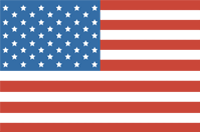What do dolphins feel? (Getty Images)
Imagine you are at the seaside. Sunlight is hitting the surface of the ocean. Some wavelengths of light pass into the water, while others bounce off it, scattering in all directions. A tiny fraction of reflected light happens to reach receptors at the back of your eyeball, triggering electrical impulses that cause your brain to register the colour turquoise. Other rays from the sun fall directly on your skin, where receptors detect a sensation of warmth. A pulse of pressurised air from the lungs of a gull flying overhead sets up a wave of ripples in the air around it. As the wave travels outward, it bends sensitive hair cells in your inner ear, triggering an electrical signal creating the experience of sound.
We assume the information our senses feed us is objective — of course we do, because what else do we have to go on? There is something almost vertiginous, then, about Ed Yong’s new book, An Immense World: How Animal Senses Reveal the Hidden Realms Around Us, which confronts exactly how we perceive what we perceive. “Light is just electromagnetic radiation,” he says. “Sound is just waves of pressure. Smells are just small molecules. It’s not obvious that we should be able to detect any of these,” let alone that they should produce the particular subjective experiences that they do.
Your experience of a beach — the turquoise sea, the warmth of the sun, the screeching gull — isn’t what the beach is. The “real” beach is giving off all sorts of stimuli, only some of which a human brain uses to form a mental representation of its surroundings. There are many, many more stimuli that we cannot sense or even imagine sensing. But other species can.
Take the seabirds on the beach, for instance. Many seabird species are finely attuned to the scent of chemicals that give away the presence of the krill they eat, meaning that far from a flat, featureless expanse, the ocean’s surface has “a secret topography” of “odorous mountains and unscented valleys… invisible to the eye but evident to the nose”. Others are able to sense the Earth’s magnetic field, which guides them during migrations. And almost all birds can discriminate between “millions” of colours that humans are unable to imagine — to them, we are colourblind.
Some of the senses Yong details are delightfully surreal. A dolphin is effectively a “living medical scanner”: echolocation allows them to “perceive your lungs and skeleton… shrapnel in war veterans and foetuses in pregnant women”. Incredibly, beaked whales, which also echolocate, have “a strange assortment of crests, ridges, and bumps” on their skulls, which might be a form of “internal antlers” that could allow them to signal to others while retaining a sleek, hydrodynamic form.
What these alien senses might feel like, we can only guess. Philosophers have long grappled with this problem of subjectivity. Thomas Nagel, in his 1974 essay What Is It Like to Be A Bat?, argued that it is impossible to capture the experience of one sense by analogy to another: for example, “red is like the sound of a trumpet”. “That should be clear to anyone who has both heard a trumpet and seen red,” he wrote. It may be tempting to talk about dolphins “seeing” the inside of each others’ bodies, but in reality, it’s possible that what they experience via their sonar sense may be so different that trying to imagine it as a kind of “seeing” is as futile as describing the colour red in terms of its musical qualities.

 Main Edition
Main Edition US
US FR
FR






Join the discussion
Join like minded readers that support our journalism by becoming a paid subscriber
To join the discussion in the comments, become a paid subscriber.
Join like minded readers that support our journalism, read unlimited articles and enjoy other subscriber-only benefits.
SubscribeWe need more writers on Unherd who can write well and have sufficient scientific education and intelligence to illuminate our perception of things in the world like Ellen Pasternak and fewer writers ruminating on their own obscure, tedious and limited obsessions.
Agreed. I’d like to see more articles on science and technology written by people with the necessary scientific qualifications. Many of the cultural trends given so much space on Unherd are driven, or at least enabled, by technological advances. Where is technology going? What will be its effects?
Too true. There’s lot’s of finger pointing about which ideological group is most to blame for the cultural/political chaos in the West. But really it’s technological change which is the precipitant, just as the printing press and the fossil fueled industrial revolution were in earlier times.
Great piece. Plato’s cave allegory made essentially the same point 2500 years ago.
Great piece indeed Ellen. Would you mind bringing it to attention of your colleague Julie Bindel?
A very well-written and thought-provoking piece. All the better, i believe, for being relatively brief in a way that many scientific essays aren’t, but Ellen has found a way of encapsulating so much, and with some style.
I’m particularly fascinated, as an artist, by many aspects of what she writes. In both my practice and through studying the work of other artists, it seems to me that what’s being presented is an attempt to escape the boundaries of our own individual perceptions. Ellen is correct when she maintains that actually escaping our internal boundaries is impossible – but what’s more important is that we’re trying to do so, and trying to convey that attempt.
That may well sound like a fools errand on first reading it, but wait… don’t we try to do the very same thing every time we hold a conversation? Or watch a film, read a book, listen to music and visit a gallery? Or occasionally, when we’re reading Unherd!!
So much more i could say about that, but like Ellen, I’ll leave that thought there.
Man, this and Bambi – 2 for 2 on Unherd today. Really great stuff!
Fascinating – and an excellent read.
Thank you
That was a surprising, satisfying read.
Excellent, thought provoking.
I arrived at the realisation that it is unimaginably difficult to appreciate what a bat truly perceives, or a pangolin wakes up to each day, but these are obvious and straightforward compared to grasping why anyone would be enthused about masks & lockdowns, or what the attraction is to having one’s life’s limits defined by others.
One thing it did tell me though; how can so-called transgender people know they are really the other gender when they can’t prove that they grasp how that gender sees the World? The best they can do is think the way they are corresponds to what they believe the other gender is, but since they can only do so from their birth body they can’t prove it. I guess this explains why transgender is just 2022-speak for “behaves like the gender stereotypes of the others”.
Very interesting.
There are two underlying premises here: 1. Unless we perceive the objective world “as it really is” – wavelengths of light, vibrations in the air, etc. – our perception is not objective. But this ignores what objectivity really means. Color is the form in which wavelengths of light are perceived by a being with our cognitive set-up. There’s nothing non-objective about this unless you demand that valid consciousness has to be a God’s-eye-view and that consciousness has to magical rather than involving natural processes. That animals with different cognitive set-ups perceive wavelengths of light in a different way does not invalidate the perception of either them or us. It’s important to recognize that perception does not consist of just limitations (biases, as the author would have it), but rather opportunities.
Secondly, Pasternack makes the common assumption that unless we perceive everything in our environment, we are, once again, not perceiving objectively. But why should this be so? If I am looking at a house from 20 meters away and only see one side of it, that doesn’t mean that I don’t see the house. It just means that I would have to explore the house to get a fuller understanding of it.
For more exploration of these topics I recommend the works of David Kelley, J.J. Gibson, and Maurizio Ferraris.
Surely “objectivity” must reduce to theory. This is no less the case with respect to truth-claims regarding the relationships between brain activity and events external to the observer. In other words, our understanding of the relationship between subjectivity and objectivity is itself the product of scientific inquiry and theorizing. Subjectivity, or the first-person point-of-view is a quality of human cognition and is the context within which all human experience occurs.
That fact about subjectivity neither grants nor precludes the subjective context (i.e., the observer’s first-person experience) a privileged access to truth. By this analysis, it’s meaningless to assert that subjective experience is inherently more valid than any “objective” theory regarding the events external to the organism that precipitated the experience. Subjectivity is a peculiar and very limited window onto “reality,” which can only be a necessarily imprecise model – a complex and dynamic set of theories – that itself is only available to us by means of that same window.
Following this path leads me to conclude that our “objective” abstract representations, our theories, or maps of “reality” can gradually become more and more reliable as they are forced to collide with other models, which are not only filtered by individual subjectivity, but might also change the filter itself, by modifying the models that constitute subjective reference points (i.e., one’s “knowledge”).
After sufficient cycles of such collisions (generally known as “scientific progress”), the models which we refer to as “objective” knowledge do become much more reliable than any individual’s subjective experience. This is the basis for believing that “objectivity” can have epistemic priority over “subjectivity.” Of course, this depends on the reliability of the methodologies, veracity, and goodwill of the community of scientists participating in this massive, ongoing conceptual particle accelerator that we refer to as science, in which theories are propelled to collide with one another and expel hidden assumptions and unexpected results.
We can theorize with growing accuracy about what it is like to be ourselves under various circumstances (e.g., after a few shots of single malt or some other psychoactive substance) as a result of recording and analyzing sufficient data points (i.e., experiences).
Similarly, we can theorize with growing accuracy about what it is like to be somebody else, including non-human organisms, after recording and analyzing sufficient data points, including comprehensive investigations of their neurophysiological sensory equipment.
In sum, our “objective” knowledge provides a substantially more reliable frame of reference than our “subjective” experience. But, as Pasternack so eloquently says, “our biases can never be escaped. They are our only window to the Immense World outside our own minds, whose full form remains permanently and tantalizingly out of our grasp.”
In spite of this unbridgeable gulf, we can be reassured that our theories are improving, by observing results and comparing them with our predictions, which are based on prior theories. If the approximation of those theories to external reality were no closer than chance would have it, the predicted results would also be no better than chance. In other words, if our theories did not actually model reality, then any scientific success would always be simply a miracle.
While conceivable, that seems less likely to me than the hypothesis that the external world exists independently of human experience and that we are gradually getting better at understanding what it is. Objective knowledge doesn’t require a “God’s-eye view.”
I am not sure whether we’re agreeing or disagreeing. My point is that some thinkers (Kant might serve as an example) believe that only a God’s-eye-view would count as objective, that everything that involves processing by the senses and brain is inherently subjective in the pernicious sense of the term and that the necessity of processing renders “ultimate reality” unknowable. I would reply that cognitive processing at a perceptual level is what makes objective knowledge possible. Such knowledge is limited but that doesn’t make it “biased,” and as you point out, we can use reason to explore our environment and gain deeper knowledge of how the world works.
Really enjoyable and insightful read, thank you.
Fascinating and quite luminously written: thank you. I look forward to reading more from you in future.
This piece reads like poetic prose. J.R.R. Tolkien would be proud of you.
So would Boris Pasternak.
A great essay, but I wonder how the phrase “women are significantly more neurotic than men on average)” will go down with the ‘Sisterhood/Coven?
“women are significantly more neurotic than men, on average”
Are you allowed to say that in these barbarian times?